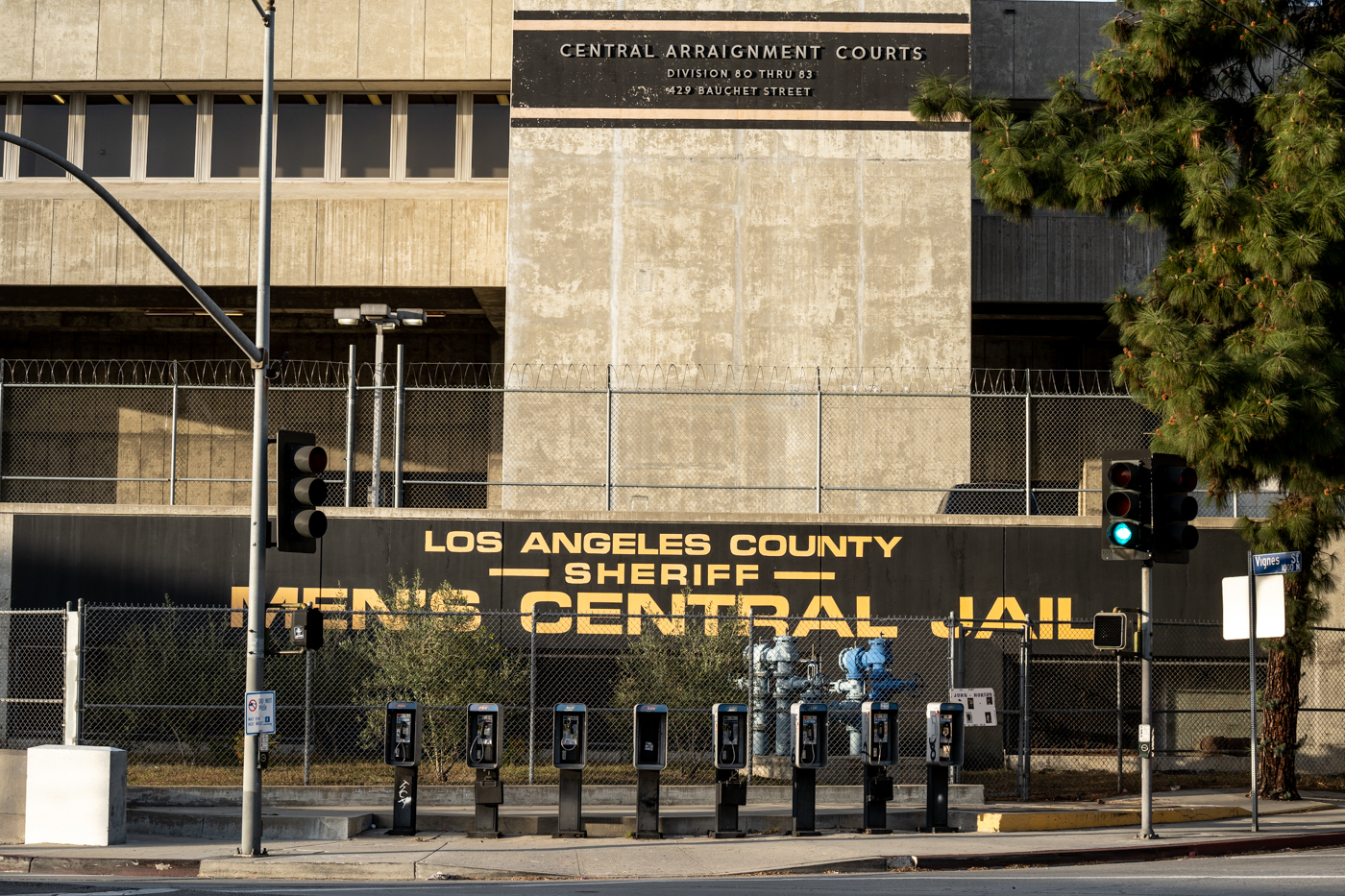Some say closing of Men’s Central Jail marks progress in reducing mass incarceration

LA’s Men’s Central Jail is slated to close in the coming years, which some faculty say will begin to address mass incarceration practices in the county. (Yuanlu (Esther) Ma/Daily Bruin)
By Arya Goyal
April 20, 2021 6:34 p.m.
Some UCLA faculty said that the closure of a Los Angeles County jail may be a step toward reducing mass incarceration practices.
Men’s Central Jail in downtown LA, which has a population of about 4,500 inmates, is scheduled to close by March 2023 at the latest. The Office of Diversion and Reentry, LA County Sheriff’s Department and the Correctional Health Services division submitted a joint report to the LA County Board of Supervisors in March on their plan to close down the Men’s Central Jail.
Inmates in the Men’s Central Jail will be diverted, released or transferred to other facilities. Around 4,664 inmates across the LA jail system have been identified in the report as eligible for diversion programs or release from jail, which will create space for transfer inmates from Men’s Central Jail.
Inmates who have mental health needs, were charged with misdemeanors or nonviolent felonies or those awaiting trial because they are unable to afford bail are eligible for release or diversion.
Sharon Dolovich, a UCLA law professor and director of the UCLA Prison Law & Policy Program, said that closing the Men’s Central Jail and not building anything new in its place would reduce mass incarceration because the jail system would have to reduce its overall population.
Diversion programs provide former inmates a community-based system of care, including community housing and clinical care.
Dolovich said public health measures during the COVID-19 pandemic forced LA public officials to reduce prison populations by 24%, which led some people to realize that the population could be further decreased.
[Related link: School of Law launches project to track data on incarceration facilities, COVID-19]
For instance, the California Department of Corrections and Rehabilitation in April 2020 expedited the release of about 3,500 inmates, including people who were serving a sentence for nonviolent offenses, had not been registered as sex offenders and had 60 days or less to serve.
“It was kind of a shock to the system,” Dolovich said. “(Some) people didn’t actually need to be in prison after all and that was only your first go, maybe we go back and find more and more people don’t actually need to be incarcerated.”
There are three strategies integral to the closure of the Men’s Central Jail: a facilities plan, a community plan and a diversion plan.
The plans aim to redistribute the existing inmate population, release at least 4,500 people across LA jails in 18 to 24 months to make space for transfer inmates from Men’s Central Jail and establish a system for those diverted or released from jail to prevent recidivism.
Beth Colgan, a law professor, said LA County has been contemplating criminal law reforms, particularly the use of incarceration in policing lower-level offenses.
“There is a concern that these are things that might be better addressed through social services or other nonpunitive, noncarceral responses,” Colgan said.
This is especially relevant for Men’s Central Jail, as many there have committed minor misdemeanors such as loitering, trespassing or low-level drug possession and therefore do not have to be incarcerated, Dolovich said.
Michelle Vega, a spokesperson for LA County Supervisor Kathryn Barger, said Barger does not support the closure of the Men’s Central Jail and wants to see the prison rebuilt and revamped.
“Her vision was that there would still be a facility that maybe would be smaller,” Vega said. “It would be similar in nature where there would be pretty substantive mental health services available to serve the individuals who are incarcerated.”
Supervisors Sheila Kuehl and Hilda Solis declined to comment.
Solis and Kuehl will introduce a motion to form an implementation team to review four more reports in the next two months and develop a plan to close Men’s Central Jail, according to a March 30 press release issued by Solis’ office. These additional reports will include recommendations from the Gender Responsive Advisory Committee on how to improve care for gender nonconforming individuals and women, and the Jail Population Review Council’s assessment of the jail population, among others.
Solis and Kuehl will also introduce a motion for a “Care Fire, Jail Last” fund which is needed to close Men’s Central Jail and potentially use federal funds to expand recidivism prevention.
Dolovich said that justice reinvestment has become a trend over the past few years and is based on the idea to reduce spending on corrections and invest in criminal justice strategies that reduce crime and recidivism.
“The idea is, let’s pay less for our policing in jails and take the money that we save and put it to more socially productive uses … that we think would actually make it so there’ll be fewer people who end up in the criminal system,” Dolovich said.


